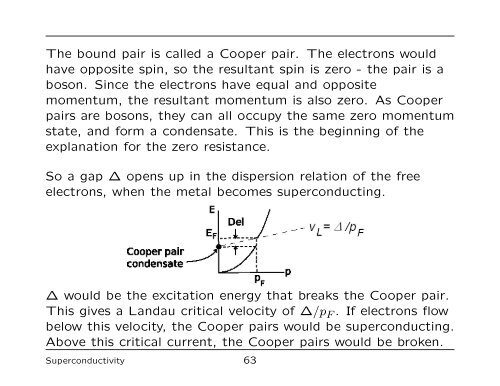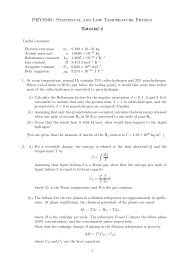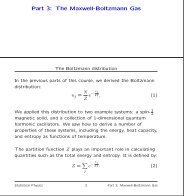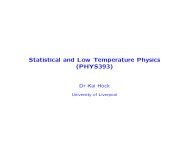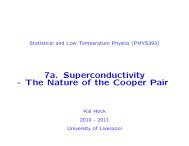7. Superconductivity - University of Liverpool
7. Superconductivity - University of Liverpool
7. Superconductivity - University of Liverpool
You also want an ePaper? Increase the reach of your titles
YUMPU automatically turns print PDFs into web optimized ePapers that Google loves.
The bound pair is called a Cooper pair. The electrons would<br />
have opposite spin, so the resultant spin is zero - the pair is a<br />
boson. Since the electrons have equal and opposite<br />
momentum, the resultant momentum is also zero. As Cooper<br />
pairs are bosons, they can all occupy the same zero momentum<br />
state, and form a condensate. This is the beginning <strong>of</strong> the<br />
explanation for the zero resistance.<br />
So a gap ∆ opens up in the dispersion relation <strong>of</strong> the free<br />
electrons, when the metal becomes superconducting.<br />
∆ would be the excitation energy that breaks the Cooper pair.<br />
This gives a Landau critical velocity <strong>of</strong> ∆/p F . If electrons flow<br />
below this velocity, the Cooper pairs would be superconducting.<br />
Above this critical current, the Cooper pairs would be broken.<br />
<strong>Superconductivity</strong> 63


